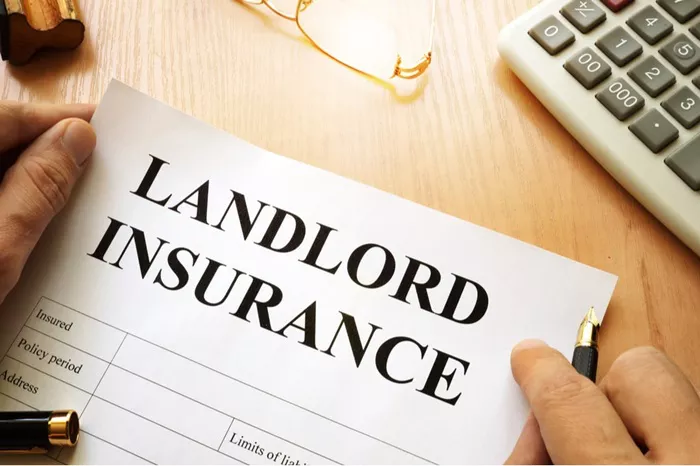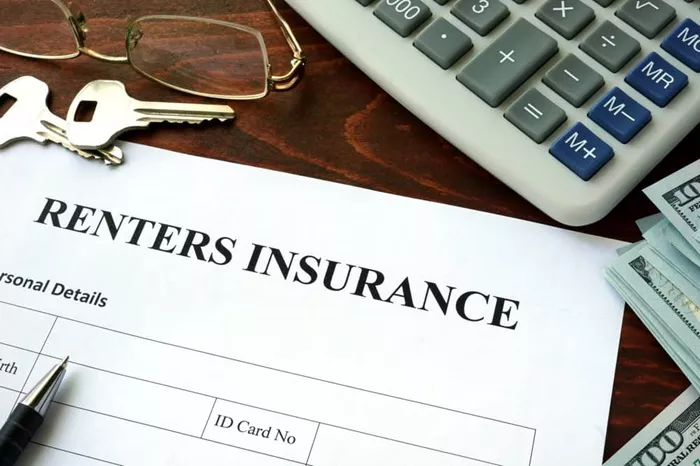A leasehold flat is a type of property ownership commonly found in the United Kingdom and several other countries. Unlike freehold ownership, where the owner has outright ownership of the property and the land it sits on, a leasehold means the owner has purchased the right to occupy the flat for a specified period, typically ranging from 99 to 999 years, under a lease agreement.
In a leasehold arrangement, the property’s ownership is split between the leaseholder (the individual or entity that holds the lease) and the freeholder (the individual or entity that owns the land and the building). The leaseholder has the right to use the flat and is responsible for maintaining the interior, while the freeholder is usually responsible for the upkeep of the common areas and the exterior structure. The lease agreement outlines the rights and responsibilities of both parties, including payment of ground rent and service charges, adherence to building regulations, and rules for making alterations to the property.
Importance of Landlord Insurance
Landlord insurance is crucial for leasehold flats as it provides comprehensive protection against various risks that can impact the property and its rental income. Unlike standard home insurance, landlord insurance is tailored to the specific needs of rental properties, covering aspects that a leaseholder, acting as a landlord, might face.
Protection Against Financial Loss
One of the primary reasons for obtaining landlord insurance is to safeguard against financial loss. This includes coverage for damage to the property, loss of rental income due to tenants being unable to occupy the flat, and costs associated with legal disputes. Without this insurance, leaseholders might find themselves facing significant out-of-pocket expenses that can severely impact their financial stability.
Liability Coverage
Landlords can be held liable for accidents or injuries that occur within their property. Landlord insurance typically includes liability coverage, protecting the leaseholder from claims made by tenants or visitors who suffer an injury or damage to their personal property while on the premises. This coverage is essential to mitigate the risk of potentially costly lawsuits.
Legal Protection
Disputes between landlords and tenants can lead to legal proceedings, which can be both time-consuming and expensive. Landlord insurance often includes legal expenses coverage, helping to cover the cost of legal advice and representation in the event of disputes over rent arrears, property damage, or eviction proceedings.
Types of Coverage
Landlord insurance policies offer various types of coverage to address the unique needs of rental property owners. Understanding these options can help leaseholders choose the appropriate level of protection for their leasehold flats.
Buildings Insurance
Buildings insurance covers the cost of repairing or rebuilding the structure of the flat if it is damaged by events such as fire, flood, or vandalism. For leasehold flats, buildings insurance is often arranged by the freeholder and included in the service charges paid by the leaseholder. However, it is essential for leaseholders to verify the extent of this coverage and ensure it meets their needs. In some cases, additional buildings insurance might be required if the freeholder’s policy is insufficient or does not cover specific risks relevant to the leaseholder’s flat.
Contents Insurance
While buildings insurance covers the structure, contents insurance protects the landlord’s belongings within the flat, such as furniture, appliances, and other items provided for the tenant’s use. This coverage is particularly important if the flat is furnished, as it ensures that the landlord can replace or repair these items in the event of damage or theft. Leaseholders should consider the value of their contents and choose a policy that offers adequate coverage.
Loss of Rent
Loss of rent coverage compensates the landlord for rental income lost if the flat becomes uninhabitable due to insured events, such as a fire or flood. This coverage is crucial for maintaining financial stability during periods when the property cannot be rented out. It ensures that the leaseholder can continue to meet mortgage payments and other financial obligations despite the loss of rental income.
Legal Expenses
Legal expenses coverage helps landlords cover the costs associated with legal disputes with tenants. This can include issues such as eviction proceedings, recovery of unpaid rent, and claims for property damage. Given the potential for disputes in rental arrangements, having legal expenses coverage provides peace of mind and financial protection against the high costs of legal action.
Liability Insurance
Liability insurance protects the landlord from claims made by tenants or third parties for injuries or property damage that occur on the rental property. This coverage is essential to mitigate the risk of lawsuits and substantial financial liabilities that can arise from accidents or negligence claims.
Buildings Insurance
For leasehold flats, the responsibility for buildings insurance typically lies with the freeholder. The freeholder arranges a buildings insurance policy covering the entire building, including individual flats and communal areas. The cost of this insurance is then included in the service charges paid by the leaseholders.
However, it is crucial for leaseholders to confirm the details of the buildings insurance policy arranged by the freeholder. They should ensure that the coverage is comprehensive and adequate for their needs. In some cases, the freeholder’s policy might have exclusions or insufficient coverage limits, necessitating additional insurance by the leaseholder.
Additional Coverages
In addition to the standard coverages, leaseholders might consider optional coverages to enhance their protection.
Accidental Damage
Accidental damage coverage protects against unintentional damage to the property or its contents caused by tenants or other unforeseen events. This can include incidents such as a tenant accidentally breaking a window or damaging a kitchen appliance. Accidental damage coverage ensures that the leaseholder can quickly repair or replace damaged items without incurring significant costs.
Alternative Accommodation Costs
If the flat becomes uninhabitable due to an insured event, alternative accommodation coverage can help cover the cost of temporary housing for tenants. This ensures that tenants have a place to stay while repairs are being carried out, and it can also help maintain good landlord-tenant relations by demonstrating the landlord’s commitment to tenant welfare.
Policy Terms and Conditions
Understanding the terms and conditions of a landlord insurance policy is essential for ensuring comprehensive coverage. Common terms and conditions include:
Exclusions
Policies typically have exclusions that outline specific events or circumstances not covered. Common exclusions might include damage due to tenant negligence, wear and tear, or certain natural disasters. Leaseholders should review these exclusions carefully to understand what risks are not covered and consider additional coverage if necessary.
Excess
The excess is the amount the policyholder must pay towards a claim before the insurance coverage kicks in. Policies often have different excess amounts for different types of claims. Leaseholders should consider the excess amounts when selecting a policy, balancing lower premiums against the potential out-of-pocket costs in the event of a claim.
Policy Limits
Policy limits define the maximum amount the insurer will pay for a covered claim. These limits can vary depending on the type of coverage and the specific terms of the policy. Leaseholders should ensure that the policy limits are sufficient to cover the potential costs of rebuilding, repairs, or replacing contents.
How to Choose a Policy
Selecting the right landlord insurance policy involves careful consideration of various factors and a thorough evaluation of available options.
Assess Your Needs
Leaseholders should start by assessing their specific insurance needs based on the value of the property, the contents provided, and the potential risks associated with the location and type of property. This assessment will help determine the necessary types and levels of coverage.
Compare Policies
It is important to compare policies from different insurers to find the best coverage at a competitive price. Leaseholders should look for policies that offer comprehensive coverage, favorable terms, and reasonable premiums. Online comparison tools and insurance brokers can be useful resources in this process.
Read Reviews and Ratings
Reviews and ratings from other policyholders can provide insights into the reliability and customer service of insurance providers. Leaseholders should consider the reputation of insurers and their track record in handling claims and providing support.
Ask Questions
Leaseholders should not hesitate to ask insurers questions about policy details, coverage options, and exclusions. Understanding the fine print and clarifying any uncertainties will help ensure that the chosen policy meets their needs and expectations.
Legal Requirements and Recommendations
While there is no legal requirement for leaseholders to have landlord insurance, it is highly recommended for those renting out their flats. Mortgage lenders often require proof of insurance as a condition of the loan, and having comprehensive coverage protects the leaseholder’s investment and income.
Legal Requirements
In some cases, the lease agreement might specify insurance requirements, such as maintaining buildings insurance or liability coverage. Leaseholders should review their lease agreement carefully to ensure compliance with any stipulated insurance obligations.
Recommendations
Additional protection, such as contents insurance, loss of rent coverage, and legal expenses insurance, is recommended based on the specific risks associated with the property. Leaseholders should also consider the property’s location, tenant profile, and potential hazards when choosing optional coverages.
Conclusion
Landlord insurance is an essential safeguard for leaseholders renting out their flats. It offers comprehensive protection against a range of risks, including property damage, loss of rental income, legal disputes, and liability claims. By understanding the different types of coverage available and carefully selecting a policy that meets their specific needs, leaseholders can ensure the financial stability and security of their investment. Additionally, staying informed about policy terms, conditions, and legal requirements will help leaseholders make informed decisions and maintain compliance with their lease agreements.
FAQs About Landlord Insurance
1. What insurance does a landlord need in Australia?
In Australia, landlords typically require a specialized landlord insurance policy to protect their investment property. Essential coverages in a landlord insurance policy include:
Building Insurance: This covers the physical structure of the property against risks such as fire, storms, and vandalism.
Contents Insurance: This covers items provided by the landlord within the rental property, such as furniture, appliances, and fittings.
Loss of Rent: This coverage compensates the landlord for lost rental income if the property becomes uninhabitable due to an insured event.
Liability Insurance: This protects the landlord from legal claims if a tenant or visitor is injured on the property.
Legal Expenses: This covers the costs associated with legal disputes, such as eviction proceedings or claims for property damage.
2. What is freehold insurance?
Freehold insurance refers to insurance coverage for properties owned outright by the property owner, without any leasehold interests. It typically includes:
Buildings Insurance: Covers the physical structure of the property, including fixtures and fittings, against risks like fire, floods, and other damages.
Contents Insurance: Covers the owner’s personal belongings within the property.
Liability Insurance: Protects the owner from legal claims arising from injuries or damages occurring on the property.
Freehold insurance ensures that the owner is protected from financial losses due to damage to the property or liability claims.
3. What is the difference between freehold and leasehold?
The main differences between freehold and leasehold property ownership are:
Ownership Duration: In freehold, the owner has complete ownership of both the property and the land indefinitely. In leasehold, the owner (leaseholder) has the right to occupy the property for a specified period, as defined in the lease agreement.
Control and Responsibilities: Freehold owners have full control over the property and are responsible for its maintenance and management. Leaseholders are responsible for maintaining the interior of their flat, while the freeholder typically manages and maintains the common areas and exterior of the building.
Payments: Leaseholders usually pay ground rent and service charges to the freeholder for the maintenance of communal areas and building insurance, whereas freehold owners do not pay these charges.
4. What is a flat in insurance?
In the context of insurance, a “flat” refers to a self-contained residential unit within a larger building, commonly known as an apartment. Insurance considerations for a flat typically include:
Buildings Insurance: Often arranged by the freeholder or the building’s management company, covering the entire structure, including individual flats and common areas.
Contents Insurance: Covers the leaseholder’s personal belongings and any furnishings provided by the landlord within the flat.
Landlord Insurance: For landlords renting out their flats, this includes additional coverages such as loss of rent, liability insurance, and legal expenses.
You Might Be Interested In





















